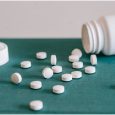
Did you know when you feel soreness and stiffness post your hardcore gym session, it’s from lactic acid buildup?
Do you know how you can help this, so you’re not as sore?
Don’t worry. We’re here to help you learn why you should incorporate active recovery workouts into your routine!
What are Active Recovery Workouts?
Most people associate recovery as a rest day. Did you know you can rest your muscles while still staying active?
Active recovery is doing a low-intensity exercise following one of your heavy workouts or activities. You may be surprised to hear the most beneficial way to recover from strenuous activity is to do a low-intensity workout rather than remain still, which would be passive recovery.
Active recovery is more helpful in responding to the extreme physical exertion of your body. It will alleviate the stress placed on your muscles and joints and improve your muscle growth and overall strength.
Are you convinced yet? Great now that you know what it is, let’s talk about how you do it.
How To Incorporate Active Recovery Into Your Routine
When thinking about your workouts, you can break them down into two categories: aerobic vs. anaerobic.
Aerobic exercise is when your activity is at a point where your oxygen intake is ideal for burning your fuel stores in your body. Anaerobic exercise is when you push your heart rate past 80% and start burning fuel above your oxygen intake, inevitably leading to muscle exhaustion.
This is important because when your heart rate is below 80%, lactic acid can move to the bloodstream. If you are passively recovering or not doing anything, it will store instead of flow, causing tension.
Cool-down phases of exercise are typical and typically include jogging or biking at a slower pace. A cool-down typically only lasts a few minutes and is in addition to a workout, whereas active recovery is its process for a more extended period.
Some of the activities could include:
- Exercises using bodyweight
- Yoga
- Cycling
- Elliptical or rowing machine
- Aquatic activities
- Brisk walking or jogging
Active recovery could even include massages, using foam rollers, and stretching as a more relaxing tactic. This helps improve your joints’ range of motion.
If you’re looking for other ways of active recovery and best practices, check out https://lyf.fit/healing-sore-muscles-post-workout-best-practices/.
What are the Pros and Cons?
Active recovery has way more benefits than negatives. It can be beneficial to anyone in multiple ways, including:
- Reducing lactic acid buildup in your muscles, minimizing post-exercise tightness and discomfort.
- Helping alleviate fatigue and avoid a mood crash after a massive sporting event.
- Promotes blood flow to your joints and muscles, which counteracts inflammation.
- Maintains your heart rate at a steadier state, which improves your endurance and training.
The only potential negative is subbing active recovery instead of passive recovery when your body needs a rest day. Taking a day or so off isn’t going to hurt you, and sometimes it’s vital when you have an injury, or your body needs you to cease activity for a short while.
However, it’s important not to prolong passive recovery, so it doesn’t set you back.
Conclusion
Now that you know what active recovery workouts are, how to incorporate it, and what the benefits are, you are an active professional recoverer.
If you’re looking for more fitness resources, check out more on Lyf Fit.




